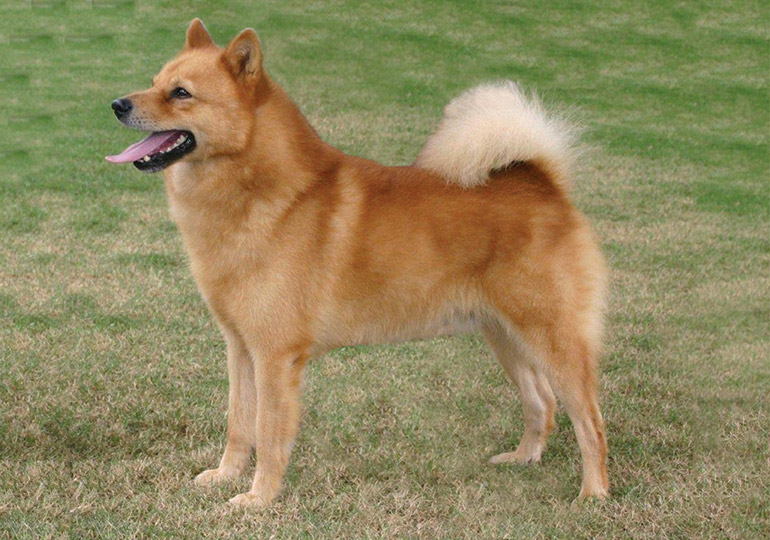Finnish Spitz
Breed Details
Size:
Exercise Requirements:
Grooming Requirements:
9-15 Kg (Approx)
13-15 years

Appearance
The Finnish Spitz is double coated in long, dense fur of a reddish-brown to yellow-red colour. Small, white markings are sometimes found on the feet or chest. Its keen, fox-like expression can be obscured if the fur is too coarse or overdone. A square build with a long and straight back, the neck is muscular and short. The tail curves in a pronounced arch forward, downward and backward against the thigh. The head is clean cut and medium size.
History
Named the National Dog of Finland in 1979, the prehistoric origins of the Finnish Spitz can be traced back to Central Russia. Finno-Ugrian tribes bred these fox-like animals for their aptitude to hunt and gather food.
With the rise of international trade, the Finnish Spitz mated with other dogs across Europe to the point of near extinction. In the late 1800's, Finnish sportsman Hugo Roos went hunting in the northern forests, where he observed the admirable traits of non-mixed Finnish Spitz. His efforts to revive the breed from a selection of purebreds came to fruition within 30 years. The first breed standard
was established in 1892, and it possesses the hunting attributes of a bark pointer.
Temperament
This is not an animal to be cooped up in a kennel or high-rise apartment: the Finnish Spitz is a lively, active dog that requires plenty of time outdoors.
They are especially fond of children and a perfect fit for an active family.
Being a hunting dog, its behaviour around smaller animals is unpredictable, but it can be trained to live harmoniously with cats and other dogs.
As an independent dog, the Finnish Spitz will steer clear of strangers but bond well with the family. Males develop a pronounced masculinity with the tendency to be over-protective. Females are traditionally less domineering and feminine. Most Finnish Spitz bark at anything considered outside the ordinary- a prized trait in the role of a hunting companion.
Care/Grooming
This highly intelligent dog requires a balance of indoor playing time with the family and outdoor exercise. It is an exceptionally clean animal, licking itself of any soil until the coat shines. Their grooming needs are minimal, only needing a weekly brush from head to tail.
Breeders
Currently no Breeders in SA for this Breed

